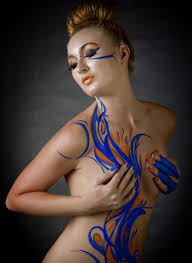 Art may truly be in the eye of the beholder. What some experts deem "art" leaves those less educated in art history scratching their heads. But one thing is certain: art has become an integral part of interior decorating for the home. From throw pillows featuring exotic fabrications and finely crafted baskets to hand painted silks and children's hand-painted furniture, art in the home is here to stay.
Art may truly be in the eye of the beholder. What some experts deem "art" leaves those less educated in art history scratching their heads. But one thing is certain: art has become an integral part of interior decorating for the home. From throw pillows featuring exotic fabrications and finely crafted baskets to hand painted silks and children's hand-painted furniture, art in the home is here to stay.Hand painted silks are especially appealing, and can add elegance and sophistication to interiors. Silk paintings for wall displays use high quality dyes on luxurious silk that look gorgeous in frames. Hand painted silks can also be used for screens, giving an exotic and highly appealing theme to a boudoir. Similarly, abstract silk scarves draped over chair backs or nightstands add a subtle beauty to a dressing area. Decorative hand painted silk pillowcases can also provide a colorful contrast to solid color bedding and walls.
 Hand painted silks and dyed silks have a rich and ancient tradition. Experts speculate that silk was first developed between 5,000 and 6,000 years ago in China, and was used as an elegant fabric for garments and, eventually, as an important component of the country's trade. Indeed, the 5,000-mile "Silk Road" connected China to Persia, India, Egypt (where mummies were sometimes wrapped in silk), and Rome.
Hand painted silks and dyed silks have a rich and ancient tradition. Experts speculate that silk was first developed between 5,000 and 6,000 years ago in China, and was used as an elegant fabric for garments and, eventually, as an important component of the country's trade. Indeed, the 5,000-mile "Silk Road" connected China to Persia, India, Egypt (where mummies were sometimes wrapped in silk), and Rome.In India, Kanchi silk was and is woven and hand-dyed, and treasured for its superior craftsmanship and vibrant colors. Silk played an important role in the Roman Empire, and used to clothe emperors and as diplomatic gifts.
 Most people are familiar with batik, a silk painting method that dates back more than 1,800 years. Batik is termed a "resist" technique because wax is applied to the fabric to make it "resist" penetration by the dye. Often, a fabric is waxed and dyed many consecutive times in order to incorporate many colors into the fabric.
Most people are familiar with batik, a silk painting method that dates back more than 1,800 years. Batik is termed a "resist" technique because wax is applied to the fabric to make it "resist" penetration by the dye. Often, a fabric is waxed and dyed many consecutive times in order to incorporate many colors into the fabric.Another "resist" method utilizes "gutta," a derivative of the Indonesian Palaquim tree that is a natural latex. Gutta is most often used with the French Serti silk painting method. The consistency of gutta is similar to that of rubber cement, and is not as easily removed as wax or water-based gutta.
 Today, artists use a variety of silk dyes and paints to achieve breathtakingly beautiful contemporary art. Those that produce the most vivid colors are dyes that require steaming in order to bond with the fabric. Paints used for hand painted silk are often the consistency of watercolors, and are set by using an iron.
Today, artists use a variety of silk dyes and paints to achieve breathtakingly beautiful contemporary art. Those that produce the most vivid colors are dyes that require steaming in order to bond with the fabric. Paints used for hand painted silk are often the consistency of watercolors, and are set by using an iron.When decorating your home, keep in mind that not all hand painted silks incorporate Asian themes. Contemporary images and colors abound, and you're sure to find silk scarves, silk framed art, silk pillowcases, and silk panels that complement your decorating scheme.











